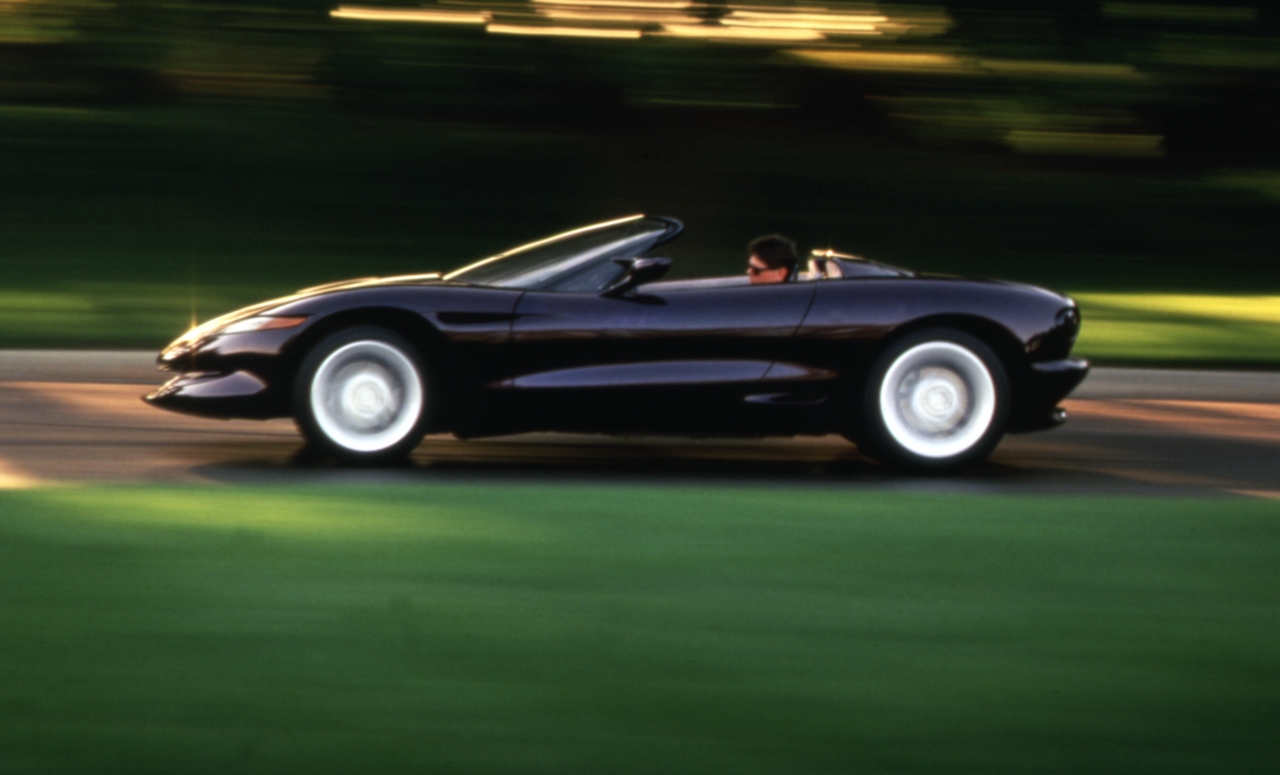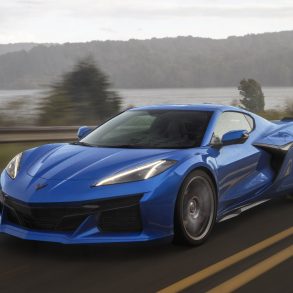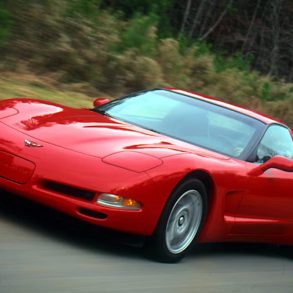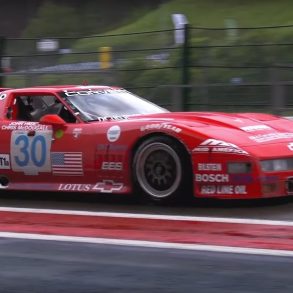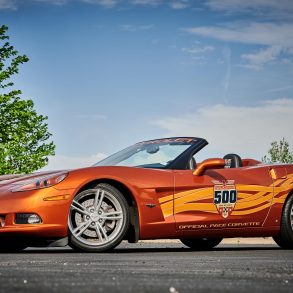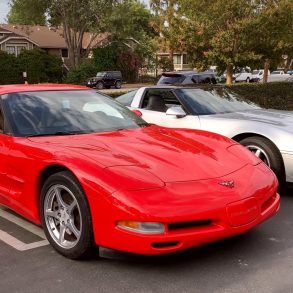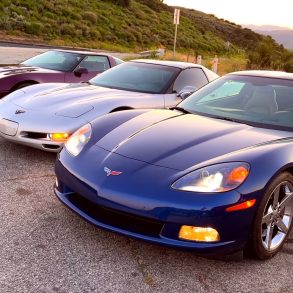The 1992 Stingray III Concept (The California Stingray)
As we near the end of 2022, Chevrolet’s announcement that the Corvette moniker may be transformed into its own brand has left the Corvette community divided. In one court, we’ve got the nay-sayers who argue that building alternate models under the Corvette name will adversely dilute the brand. Conversely, there are those who have always wanted a Corvette but could not, for one reason or another, justify buying a two-seat sports car. For those in that second camp, having options to buy a Corvette sedan or SUV might make the moniker more desirable to a larger audience. In either case, Chevrolet’s decision is most probably motivated by the market sustainability of the brand in a climate where sports cars just aren’t as popular as they used to be.
Ironically, Chevrolet’s decision to expand the Corvette moniker into a broader offering should be measured in stark contrast to the decision that was almost made by GM some thirty years ago to discontinue the Corvette lineup entirely. As hard as it might be to fathom today, there was a period during the late 1980s in which General Motors considered canceling the Corvette program as part of a larger corporate restructuring aimed at improving the company’s market share after a decade of rapidly declining sales across the various marquees.
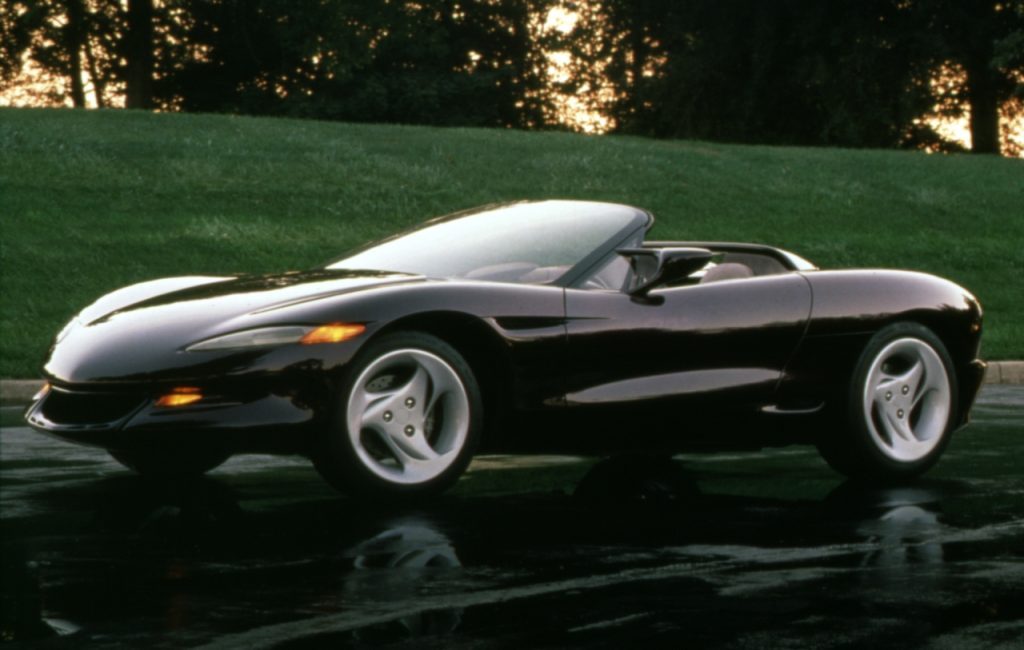
At General Motors‘ 1989 executive conference in Traverse City, Michigan, GM’s new president Jim Stemple made the executive decision to indefinitely postpone the development of a fifth-generation Corvette. As part of that decision, Stemple also recommended rebranding or even canceling, the fourth-generation Corvette platform due to its increasingly poor sales numbers. Chevrolet General Manager Jim Perkins, having just returned to the company after a stint at Toyota, argued that the car-buying public still viewed the Corvette as the division’s flagship automobile. His compelling arguments convinced most in attendance at the executive conference that canceling the fourth-gen program would only further damage the company’s already-volatile public image.
During the same period that Perkins was fighting for the continuation of the Corvette program, GM’s Vice President of Design Chuck Jordan had begun exploring alternative styling viewpoints for a fifth-generation model. In October 1989, Jordan staged a contest to see which of GM’s design studios could create a new proposal that best contemporized the Corvette’s styling for a new generation of consumers. He envisioned a Corvette that combined the classic styling of the Corvette with futuristic body lines, cutting-edge technologies, and modern materials.
John Schinella, director of Chevrolet’s Advanced Concept Center in Los Angeles, decided that his department’s design proposal would depict a car that was smaller than the current fourth-generation model. Their car would feature a five-seat configuration and a high-performance hybrid drive. Moreover, it would utilize technologies previously introduced in earlier concepts, including an adjustable steering wheel and pedals, all-wheel steering, a head-turning clamshell hood, scissor doors, a pop-up roll bar, night vision capable rearview camera, more ergonomic seats (than anything previously introduced in a Corvette), and active suspension. As he (along with his design team) had defined the general architecture they wanted for chassis and drivetrain, Schinella began defining the “look” of the car thru a series of quickly rendered sketches. These sketches were presented to his team at the Advanced Concept Center where they were reviewed, critiqued, and returned to Schinella with advised improvements. It was thru this process that the Stingray III started to take shape.
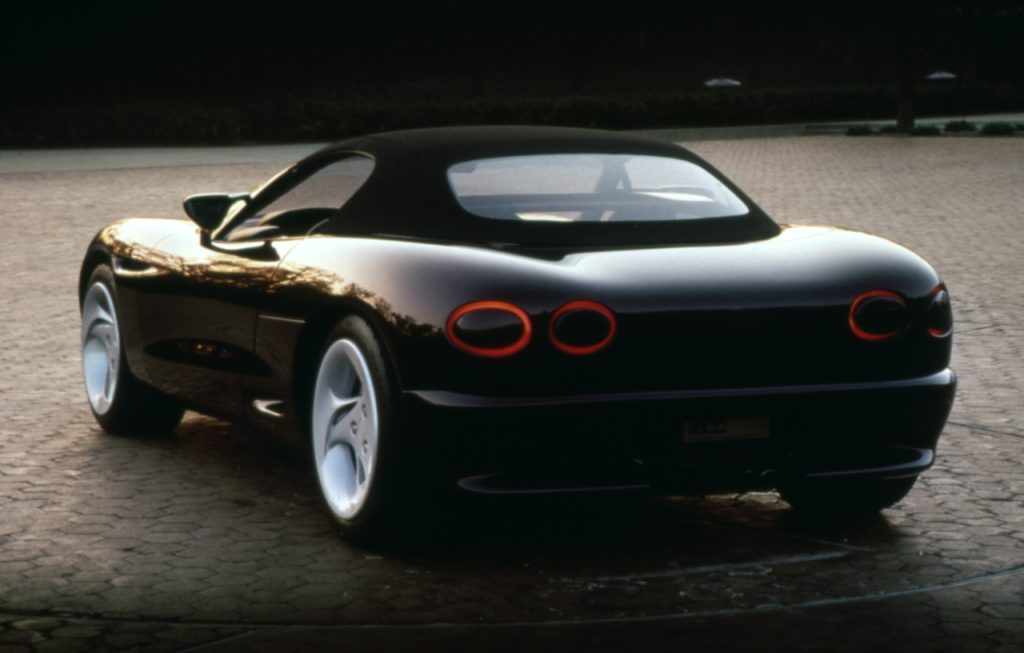
Schinella’s completed design drawings utilized styling elements that paid homage to several of the Corvettes that came before it, including Bill Mitchell’s Manta Ray concept. Schinella understood the importance of incorporating classic Corvette elements into his concept while simultaneously creating a new aesthetic that utilized contemporary design standards, and could be built using the latest construction materials.
A prototype was fabricated from Schinella’s design drawings. The Stingray III concept included a stretched wheelbase with wider proportions than any Corvette before it, a bobbed tail, and a steeply raked windshield. Its entire front end was comprised of fluid, dramatically sculpted curves that swept up and over the car’s front axles. The car’s clamshell hood and scissor-style doors afforded easy access to the engine and cockpit areas. Behind the cockpit, a rounded decklid concealed a separate trunk area. Four elliptical taillights and a stylized rear bumper made up the rear of the car. The car sat on cast aluminum wheels wrapped in 285/35ZR-18 Goodyear tires.
While the outward aesthetic of the Stingray III added a lot of character to the car (especially when compared to the then-current Corvette offerings available to the automotive buying public,) this latest concept lacked the massive side frame rails of its fourth-generation counterpart. Instead, the inclusion of low-side sills allowed for vastly improved accessibility to the car’s cockpit. Likewise, the left side of the dashboard articulated upwards when the driver’s door was opened, providing the car’s pilot with improved knee clearance when entering or exiting the vehicle.
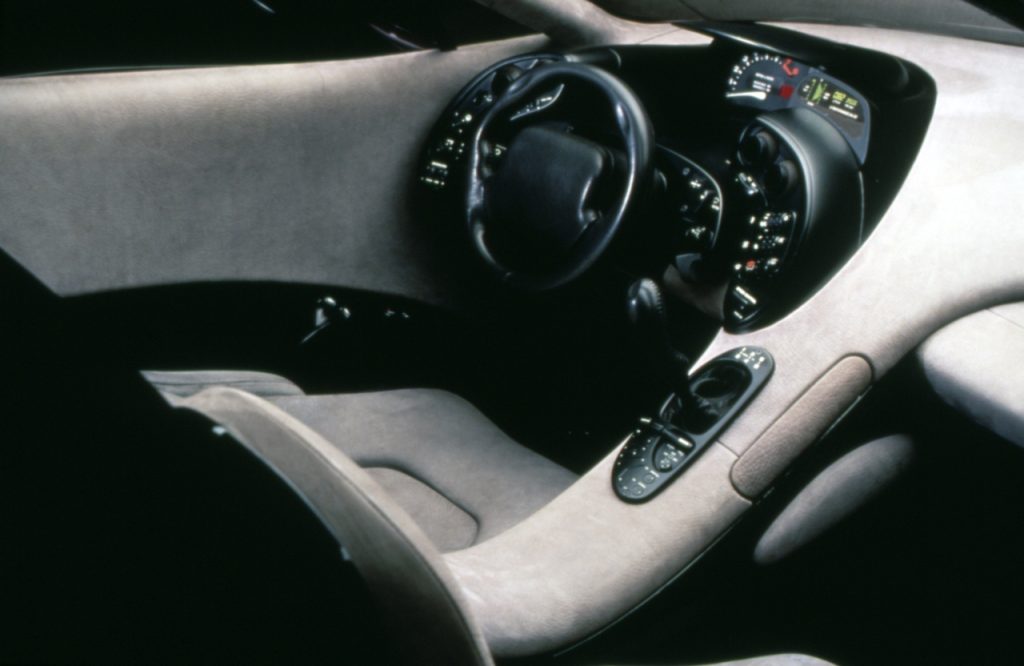
The car’s instrument panel was comprised of a mixture of analog and digital gauges. Black, “kidney-shaped” pods were mounted on either side of the speedometer/tachometer display. Each contained a dense collection of dials, illuminated buttons, and toggle switches which were used to operate the car’s many onboard technologies, including an in-car camera system with built-in telemetric storage (think early Performance Data Recorder (PDR) technologies like those found in the C7 and C8 Corvette Stingray models). Both the instrument cluster and the adjoining pods were positioned directly within the driver’s field of view thanks to the near-recumbent positioning of the car’s fixed, ergonomic seats. And, just as Schinella had intended, the steering wheel and pedals of the Stingray III were adjustable to meet the needs of virtually anyone who wished to drive it.
A variety of advanced technologies were also incorporated into Stingray III’s chassis/underpinnings, including all-wheel drive steering and a newly developed active suspension system. The latter used four optical sensors mounted to the car’s undercarriage to continuously sample road/driving conditions. The collected data was then relayed to the car’s computer-controlled coil-over suspension system which adjusted the amount of shock damping required for optimal performance. While this type of technology has become almost commonplace today, its inclusion on the Stingray III was pioneering for its time and demonstrated the potential that a concept car of this type could have on future automotive offerings.
Recognizing an opportunity to improve fuel efficiency and reduce vehicle emissions, Schinella originally designed the Stingray III around a high-output V6 engine. Although the introduction of a V6 in a would-be Corvette broke with decades of brand tradition, Schinella reasoned that the smaller powerplant would provide plenty of power in his proportionately smaller concept car. Despite his arguments in favor of the smaller powerplant, a great many others within GM’s engineering and managerial hierarchy argued that a V6-powered Corvette was a “step backwards,” so the Stingray III was instead fitted with the next-generation LT-1 engine; a 5.7-liter V8 which produced 300 horsepower (this same engine went on to power the 1992 (and later) fourth-generation Corvettes.)
The 1992 Chevrolet Stingray III Concept was introduced at that year’s North American International Auto Show in Detroit. It was hailed as a “styling preview” of the next-generation Corvette. Although the car was well received by the automotive press and most of the patrons in attendance, the car received a lot of internal criticism as being too much of a departure from the Corvettes that preceded it – especially the second and third-generation models, both of which had defined the look of the Corvette brand. Even more damning than the criticisms received (largely by the Chevy 3 design department – the team traditionally responsible for Corvette development), it was estimated that a production model of the Stingray III would sell for nearly $300,000 per unit (in 1992 dollars), making it prohibitively expensive for the vast majority of current Corvette owners. Because of this, the Stingray III never evolved beyond the concept/prototype stage.
Although the Stingray III never evolved past a concept car, there were/are many facets of the car that later appeared in several of Chevrolet’s future offerings. The basic profile and many of the Stingray III’s body lines were reimagined for the 1995 Chevy Cavalier coupe and convertible models. The car’s functional rear trunk made an appearance on the 1998 (and later) C5 Corvette convertibles, the 1999/2000 Fixed Roof Coupe (FRC) and the 2001–2004 Corvette Z06 models. Its elliptical taillights were also repurposed for all variants of the fifth-generation Corvette. And then, in 2005, a version of the Stingray III’s exposed headlamps were developed for the sixth-generation Corvette.
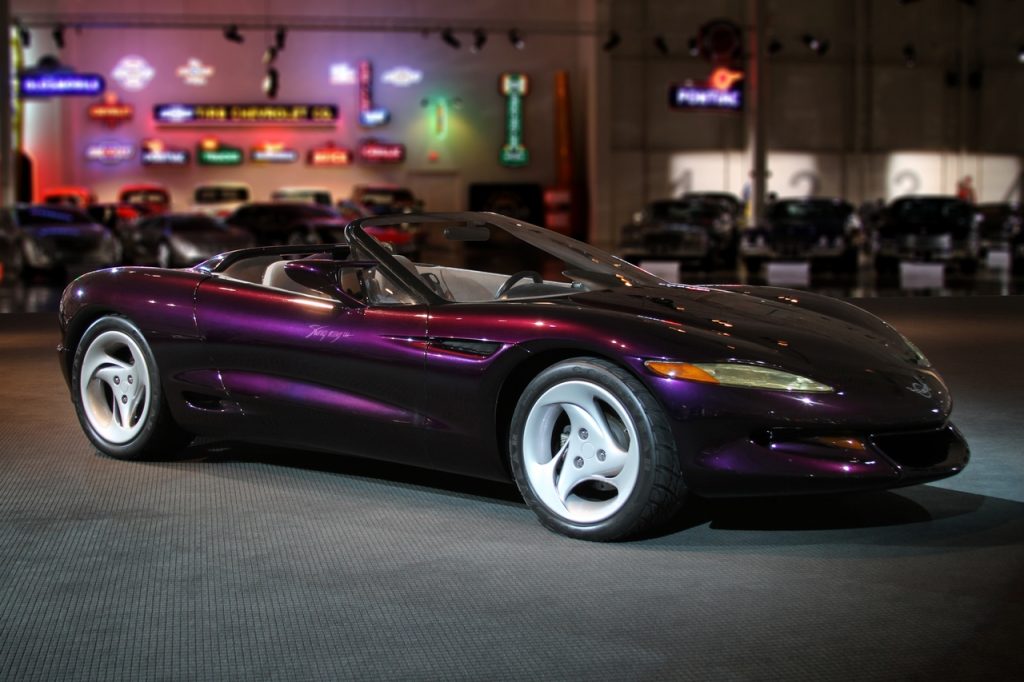
Today, the Stingray III is on display at the GM Heritage Center in Sterling Heights, Michigan where, along with an assortment of other unique concept and production cars, it helps to preserve the rich history and heritage of General Motors. It also makes appearances at the National Corvette Museum from time to time and is a featured showpiece when there.
For even more information on the Stingray III, along with a comprehensive history of the Corvette concept cars and the men and women who designed them, please pick up a copy of my book “Corvette Concept Cars: Developing America’s Favorite Sports Car” from CarTech Books. It can be purchased by clicking here, at the National Corvette Museum in Bowling Green Kentucky, and anywhere books are sold.


